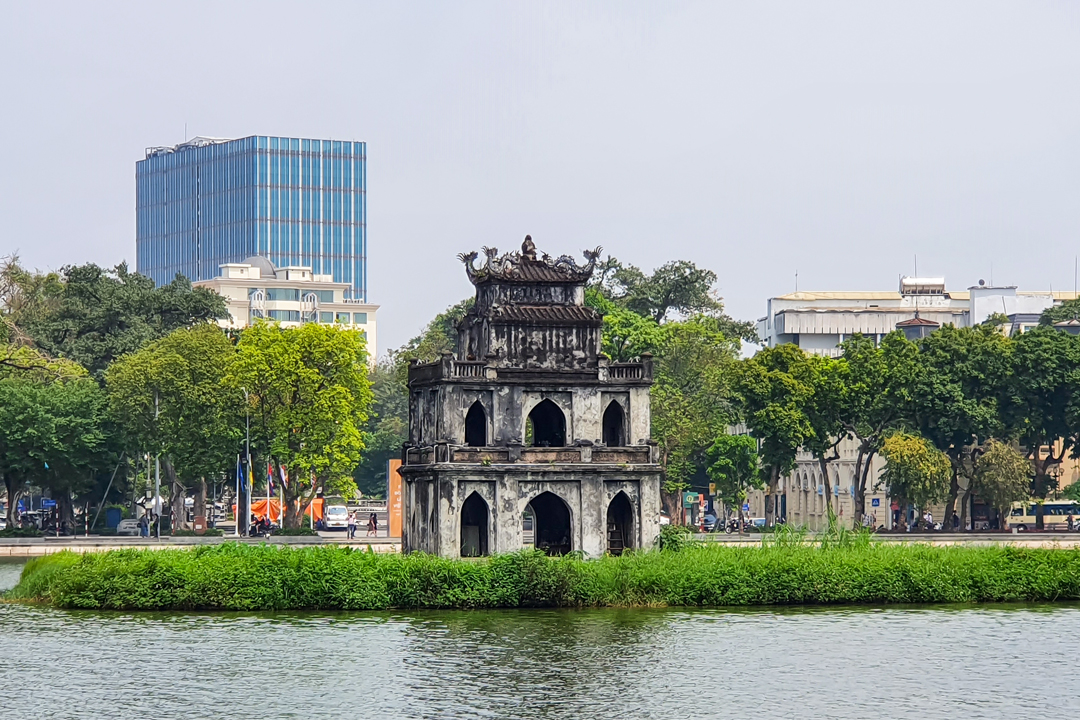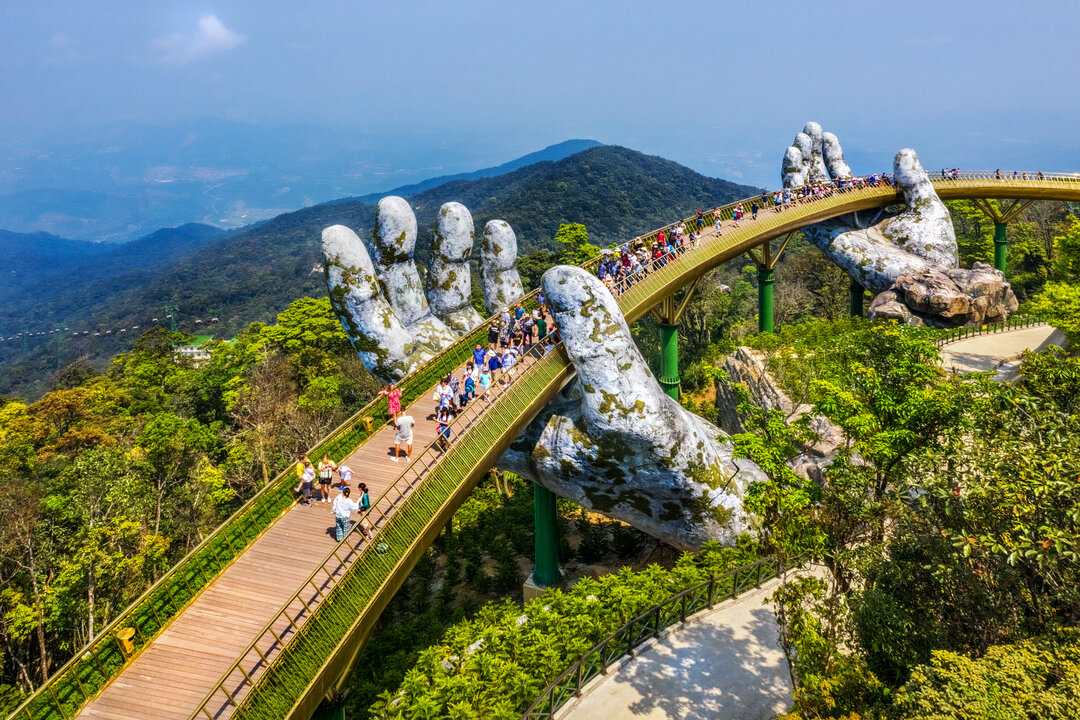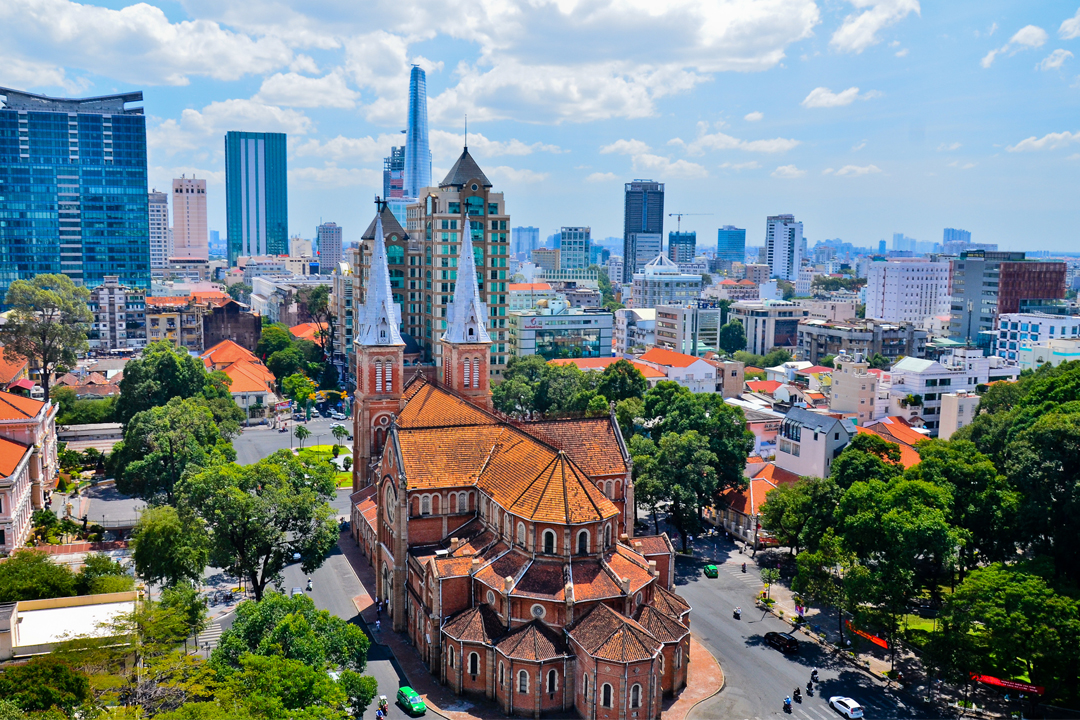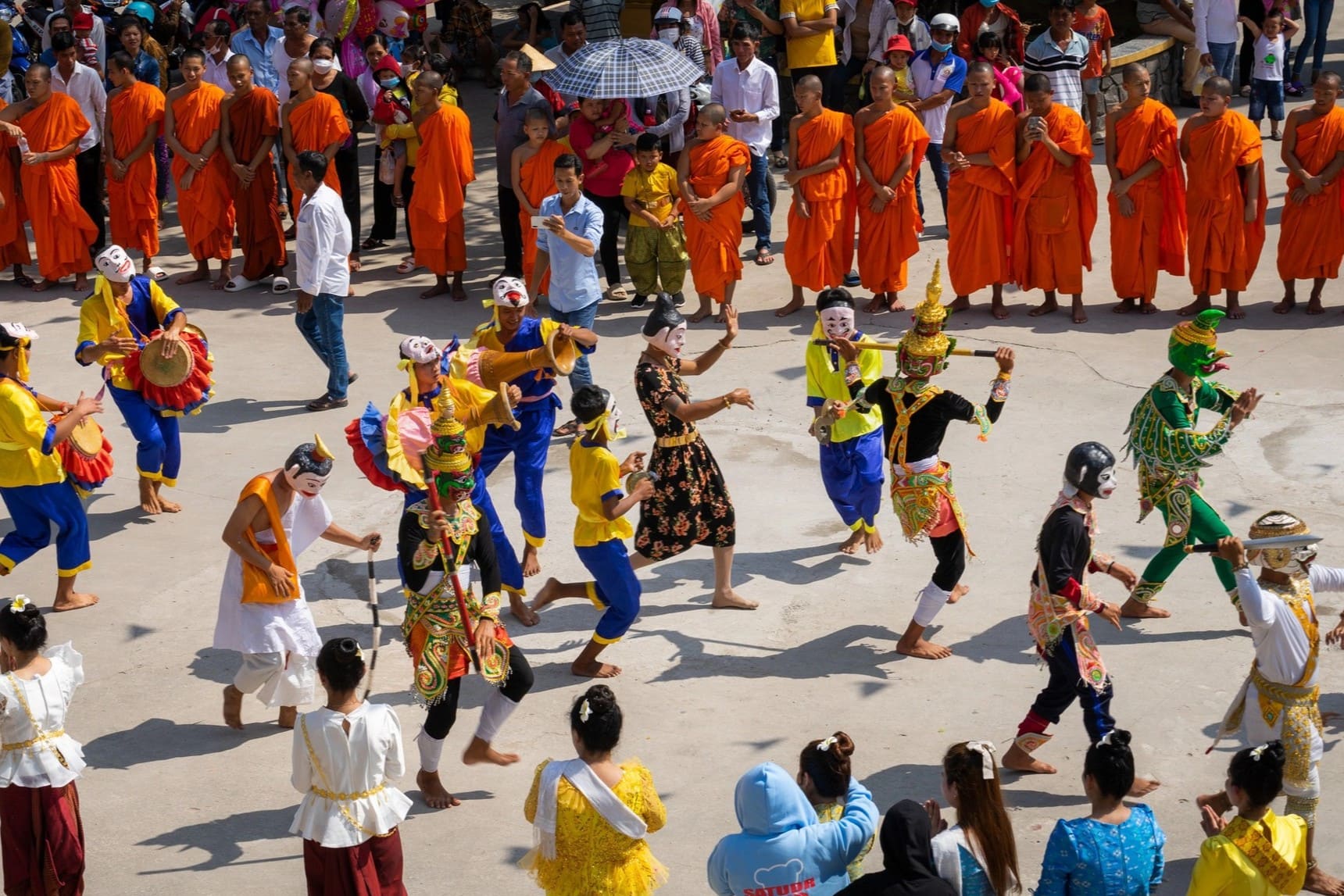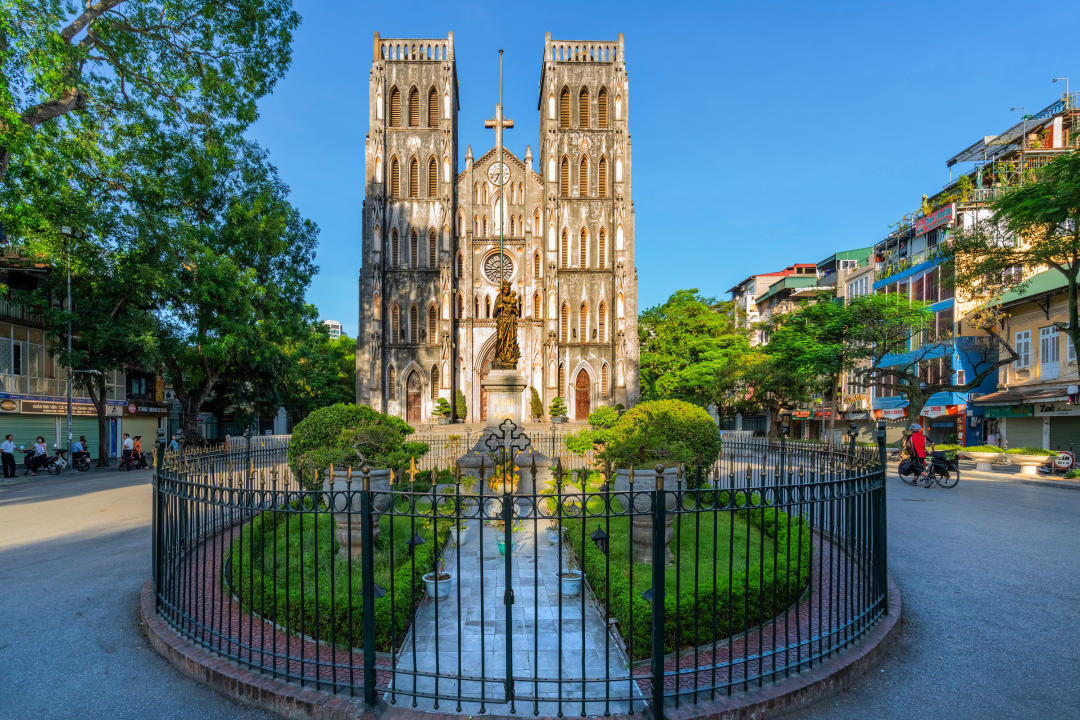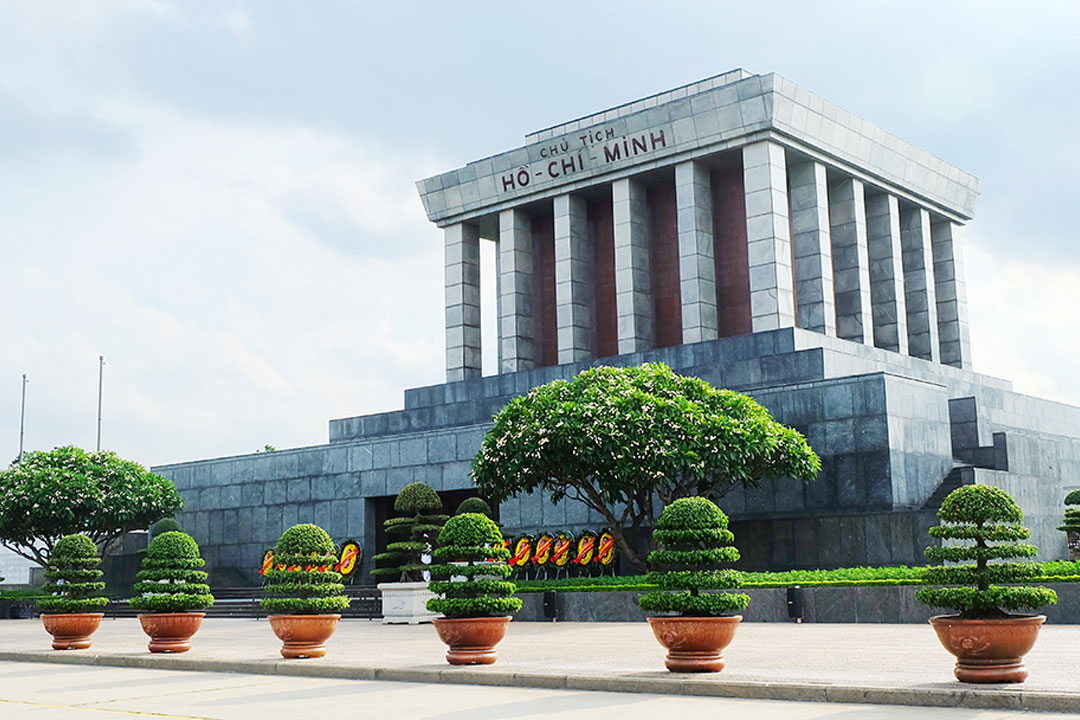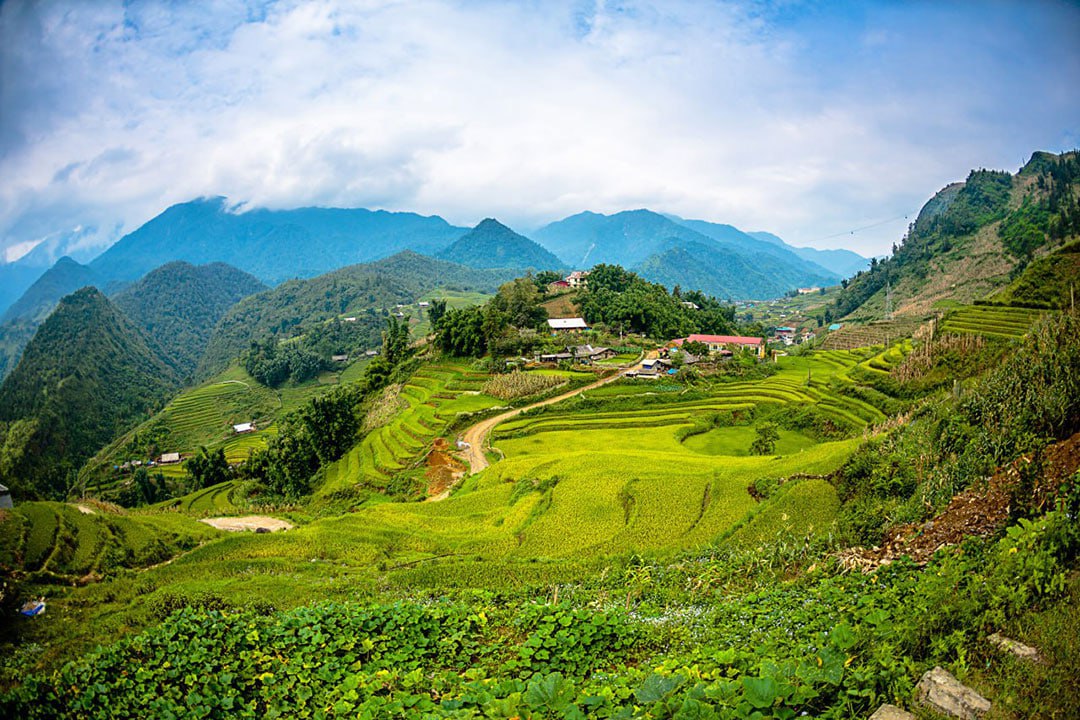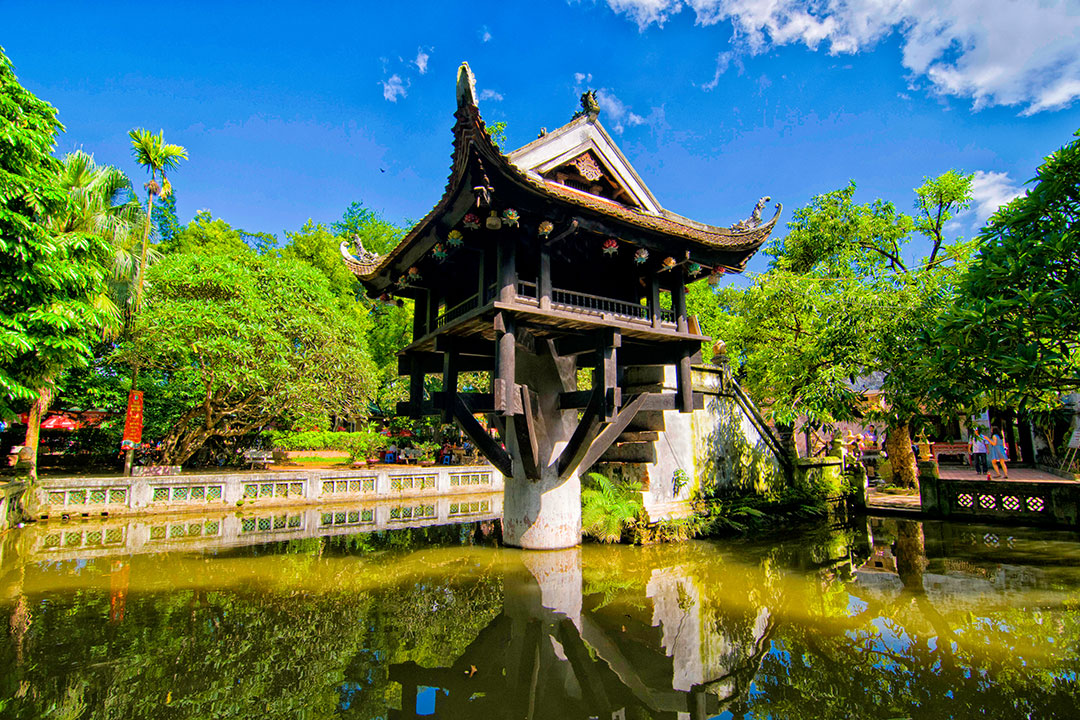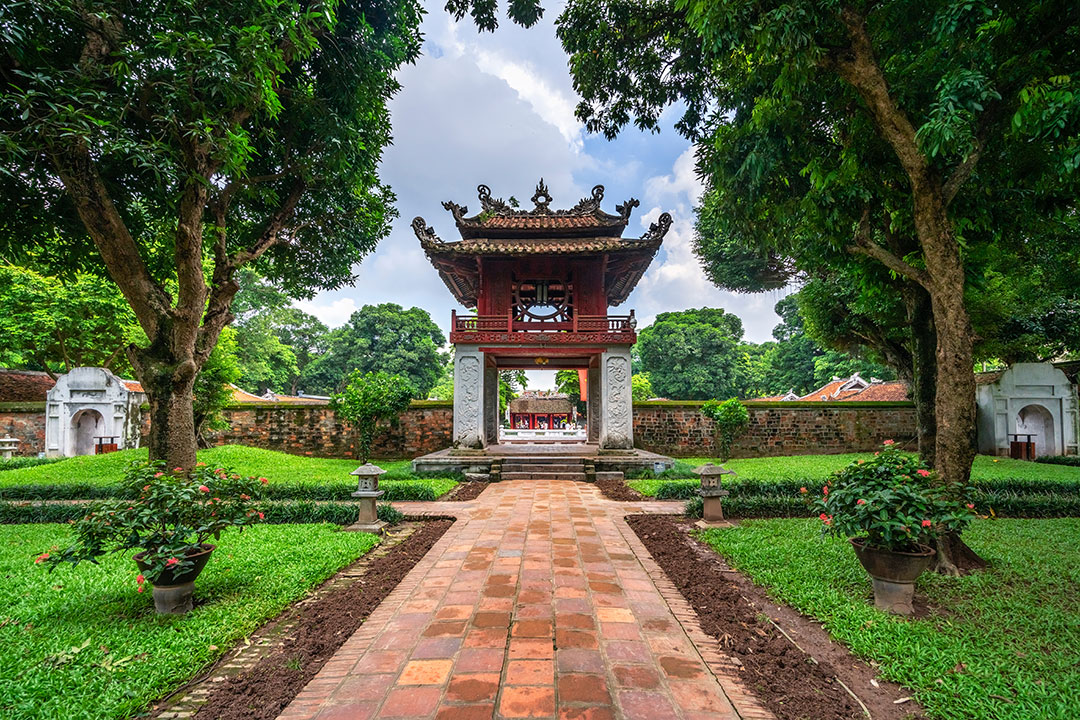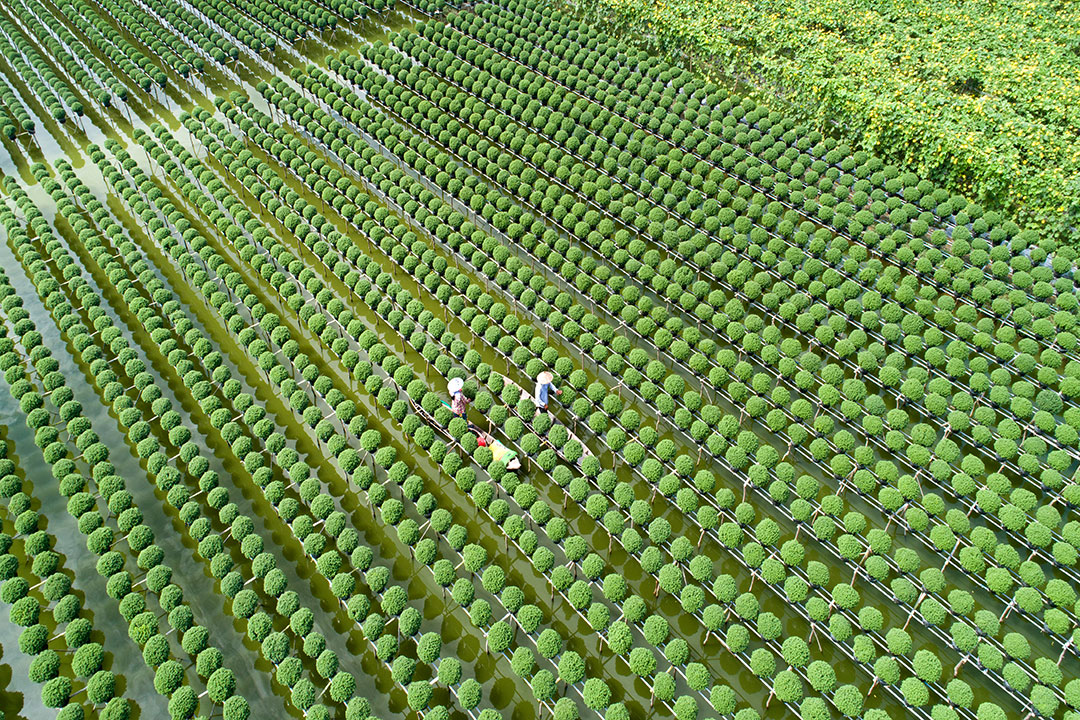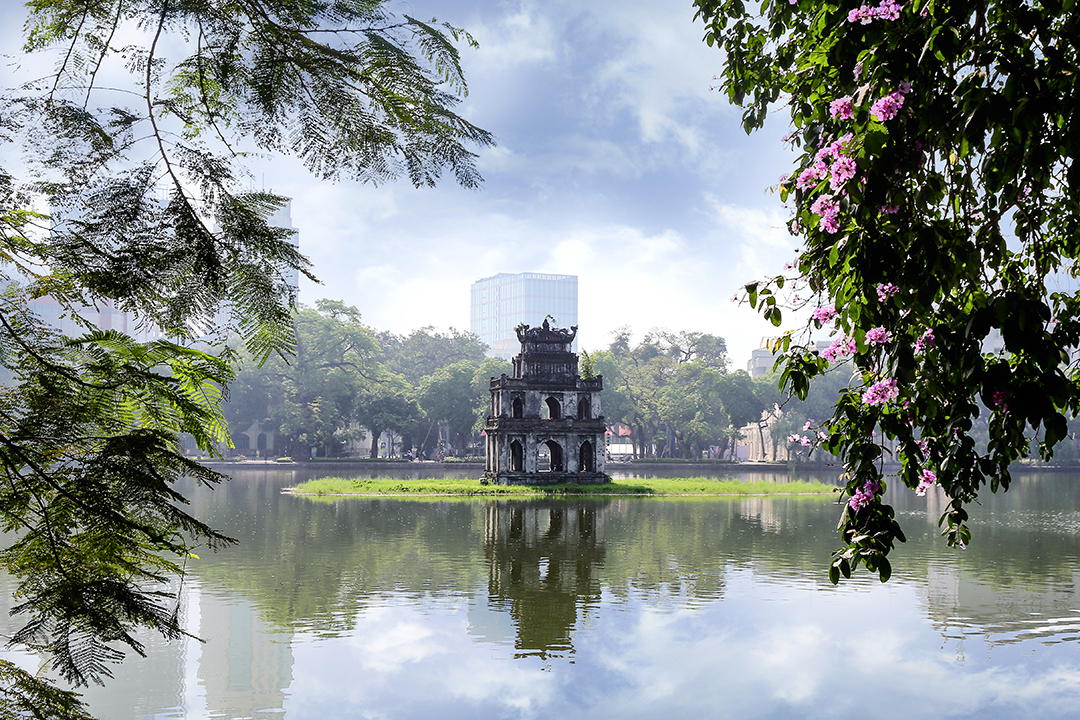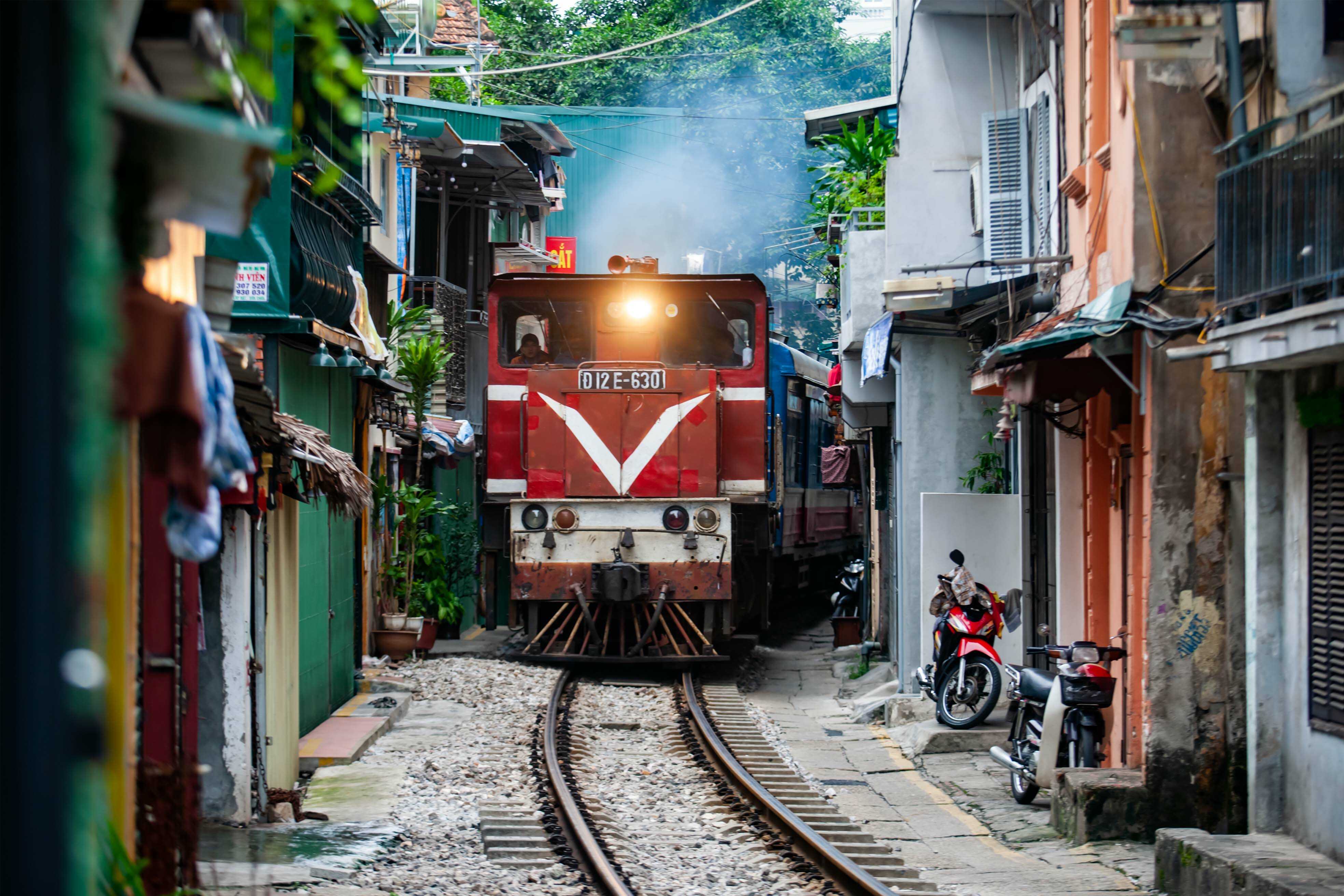St. Joseph’s Cathedral: History, Architectural Features, Things to Do & Travel Guide
St. Joseph's Cathedral (Nha Tho Lon) is a place of worship and a silent witness to the city's intricate tapestry of history, culture, and colonial influence. Often compared to Notre Dame de Paris, the cathedral's towering bell towers and intricate stained glass windows tell stories of faith, resilience, and the mingling of Eastern and Western architectural traditions. Beyond its aesthetic allure, St. Joseph's Cathedral marks a significant chapter in Vietnam's cultural dialogue. This is a space where the remnants of the French colonial era and the spiritual pulse of the local Catholic community intertwine. In this guide of GTrip, we'll delve deeper into the architectural marvels, historical narratives, and cultural significance that make this cathedral more than just a tourist attraction.
Overview of St. Joseph’s Cathedral
- Location: 40 Nha Chung Street, Hoan Kiem Ward (formerly Hang Trong Ward, Hoan Kiem District, Hanoi)
- Visitor opening hours: 8:00 AM - 11:00 AM & 2:00 PM - 5:00 PM, daily
- Entrance fee: Free
- Vietnamese name: Nha Tho Lon Ha Noi
- Architectural style: Neo-Gothic
- Opened: 1886
Often called the "Notre Dame of Hanoi", St. Joseph's Cathedral is one of the city’s most significant architectural and cultural landmarks. The striking Neo-Gothic structure stands as a testament to Hanoi's colonial past and its enduring spiritual traditions.
Beyond its role as the central place of worship for the local Roman Catholic Archdiocese, the cathedral holds deep historical significance. It was constructed on the former site of Bao Thien Pagoda, an important Buddhist temple from the 11th century, reflecting the shifting spiritual landscapes of Hanoi over the centuries. Today, it remains an active church and a major tourist attraction, drawing visitors interested in its unique architecture and vibrant surroundings.
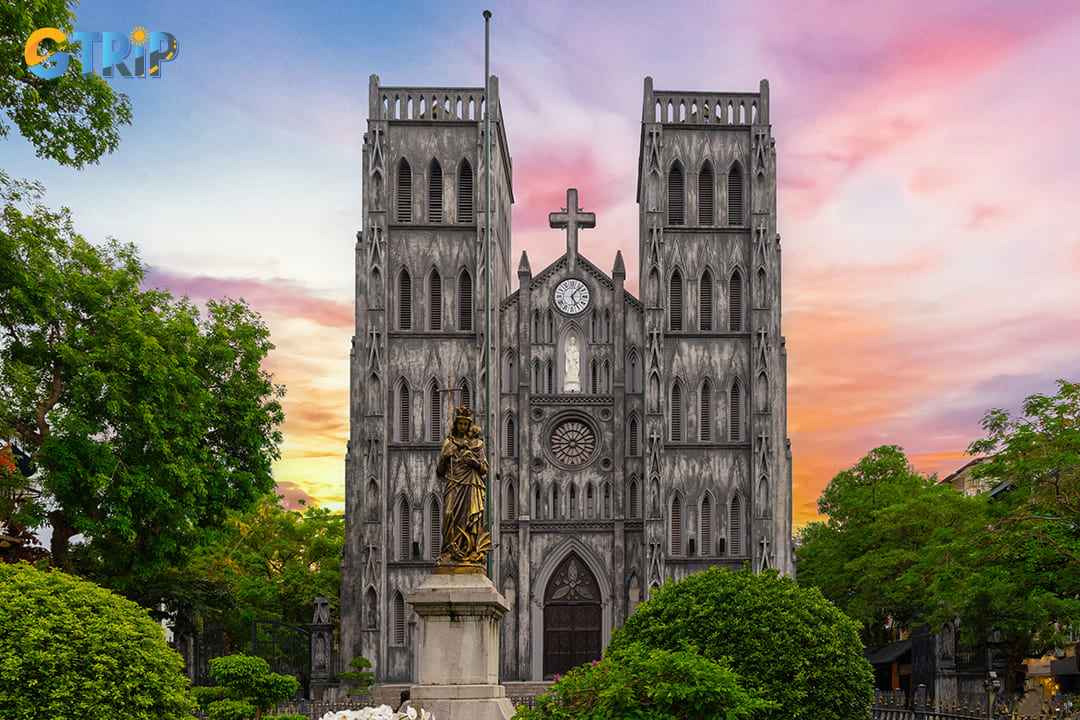
St. Joseph’s Cathedral is one of Hanoi’s most significant architectural and cultural landmarks
History of St. Joseph’s Cathedral
To truly appreciate St. Joseph's Cathedral, it's helpful to explore its history and the cultural context that shaped its creation. Let's take a closer look at the key moments that have defined its legacy.
Pre-colonial and Buddhist heritage (Bao Thien Pagoda)
Before the construction of St. Joseph’s Cathedral, the site held a significant place in Hanoi’s spiritual and cultural history. It was the location of the Bao Thien Pagoda, an influential Buddhist temple established during the Ly Dynasty in the 11th century. Bao Thien Pagoda was a religious symbol and also a testament to the flourishing of Vietnamese Buddhism during the Ly and Tran dynasties. The temple complex symbolized the prosperity of the capital Thang Long (modern-day Hanoi) and reflected the syncretic blending of Buddhism and Vietnamese culture. The destruction of Bao Thien Pagoda under French colonial rule to make way for the cathedral marked a poignant transition from a predominantly Buddhist space to a Catholic one.
French colonial era and the construction process (1884 - 1886)
The decision to build St. Joseph’s Cathedral was part of the broader strategy of French colonial authorities to assert dominance over Vietnam, both politically and culturally. The construction of the cathedral began in 1884 and was completed by 1886, under the direction of the French colonial administration. The location was chosen for its centrality and symbolic importance, directly on the ruins of the historic Bao Thien Pagoda. This act was not merely a construction project but a deliberate statement of the French mission civilisatrice (civilizing mission). It aimed to integrate Vietnamese society into a Western, Catholic framework. The architectural design, inspired by the Notre Dame de Paris, reflected a conscious effort to recreate European cultural landmarks on foreign soil. It aimed to establish a sense of familiarity for French settlers while imposing foreign values on the local population.
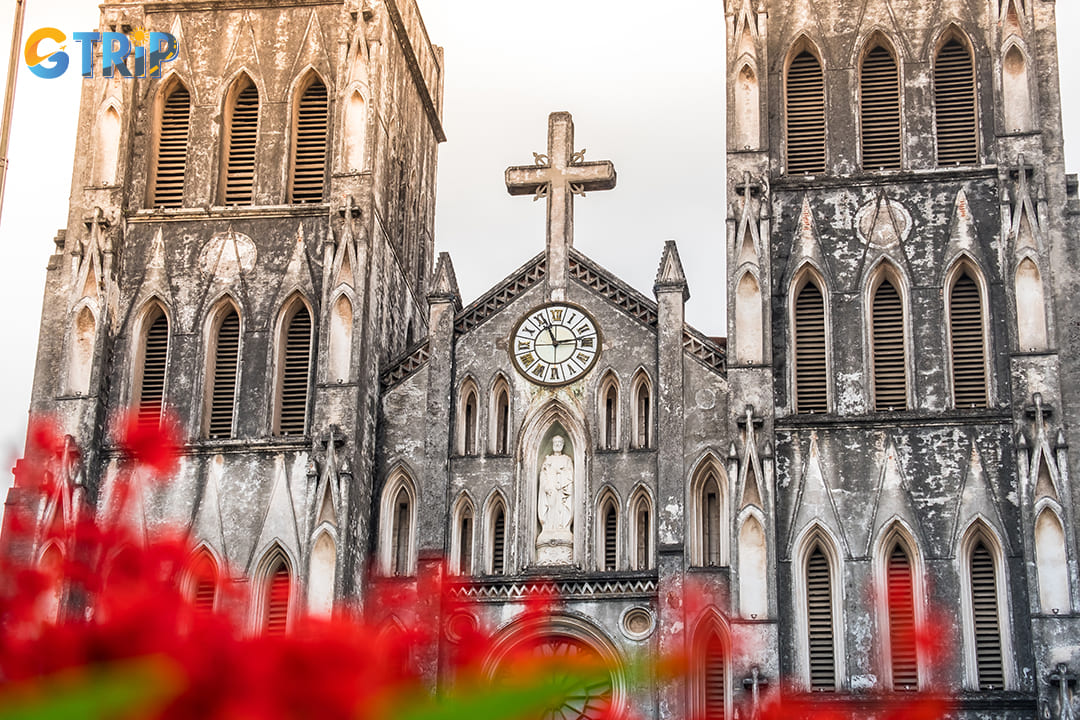
The decision to build St. Joseph’s Cathedral was part of the broader strategy of French colonial authorities to assert dominance over Vietnam
The Cathedral’s role in Vietnamese history to the present days
St. Joseph’s Cathedral played a complex role throughout Vietnam’s turbulent history. During the anti-colonial resistance, the cathedral stood as a contested space, embodying colonial power while simultaneously becoming a sanctuary for many Vietnamese Catholics who sought refuge. In the period following Vietnam’s independence in 1954, Catholicism faced suppression under the communist regime, and the cathedral's influence was severely curtailed. For several decades, religious practices were restricted, and the cathedral’s role diminished. It wasn’t until the late 1980s, with the government’s gradual relaxation of its policies on religion, that the cathedral regained its status as a vital center for the local Catholic community.
Today, St. Joseph’s Cathedral serves as a religious site and also as a cultural and social hub for the Catholic community in Hanoi. As the seat of the Roman Catholic Archdiocese of Hanoi, it plays a crucial role in the administration of over 400,000 Catholics in the region. The cathedral organizes regular mass services, special ceremonies, and community events, acting as a focal point for Catholic life in northern Vietnam. It stands as a symbol of resilience for the Catholic minority, maintaining its religious traditions amidst a predominantly Buddhist and increasingly secular society.
The historical evolution of St. Joseph’s Cathedral illustrates the complex interplay between colonial influence, religious transformation, and cultural adaptation. This layered history enriches the cathedral’s significance, making it a profound landmark that reflects the intricate narratives of Hanoi’s past and present.
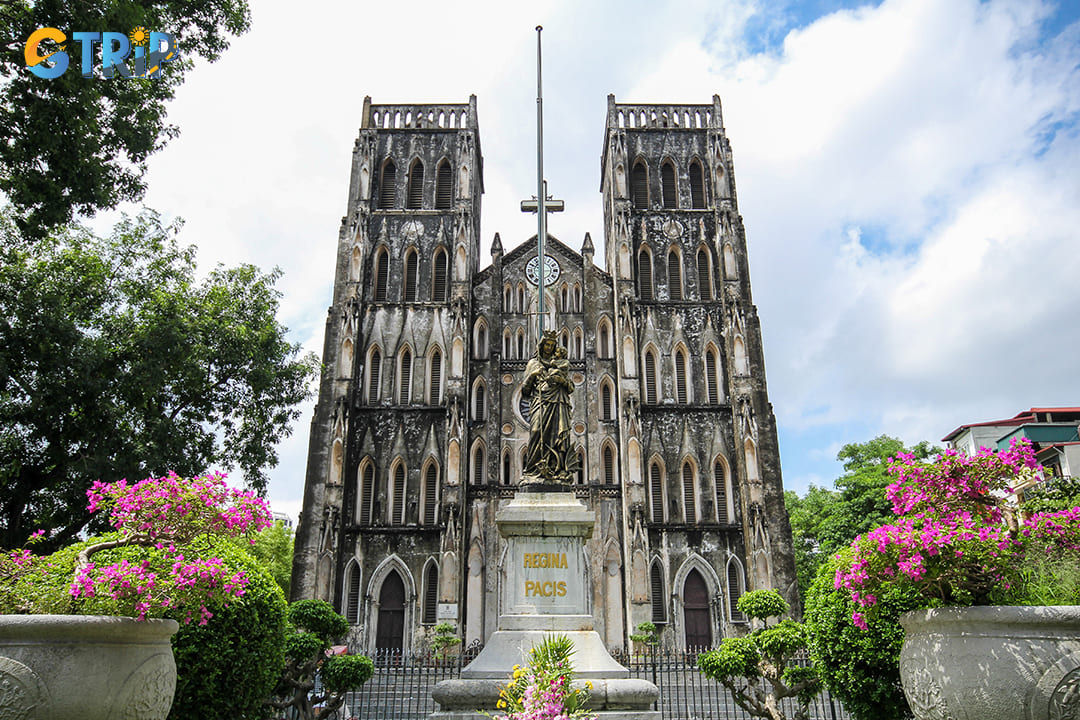
St. Joseph’s Cathedral played a complex role throughout Vietnam’s turbulent history
Architectural features of St. Joseph’s Cathedral in Hanoi
St. Joseph’s Cathedral, known for its imposing Gothic Revival architecture, stands as a testament to the influence of French colonialism in Vietnam. The cathedral's design mirrors the European Gothic style, specifically drawing inspiration from Notre Dame de Paris. The intricate detailing of the exterior and the serene, spiritual ambiance of the interior highlight the architectural mastery that makes this landmark a beloved icon of Hanoi.
Gothic Revival style (Neo-Gothic)
St. Joseph’s Cathedral is a prime example of Gothic Revival, also known as Neo-Gothic, a style popularized in Europe during the 19th century. The choice of this style by the French colonialists reflects a deliberate effort to introduce Western aesthetics into the local landscape, blending religious and cultural symbolism. Notably, the pointed arches, ribbed vaults, and the intricate tracery of the stained glass are key characteristics of Gothic architecture. The cathedral's neo-Gothic design also reflects a sense of verticality, guiding the gaze upward, and symbolizing a connection to the divine.
Exterior design: Facade, bell towers, and clock
The facade of St. Joseph’s Cathedral is both commanding and intricate, featuring twin bell towers that reach approximately 31.5 meters in height. These towers are topped with crosses, symbolizing the Christian faith amidst a predominantly Buddhist society. The cathedral's grayish exterior, aged by time, is constructed with granite stone and cement, offering a rugged, timeworn aesthetic that contrasts with the intricate detailing of its design.
- Bell towers: The twin towers house five large bells, each contributing to the resonant chimes that echo through Hanoi's Old Quarter. These bells not only signal mass but also serve as a historical reminder of French influence on Vietnam.
- Clock: Positioned centrally between the towers is a large clock with Roman numerals, reminiscent of the classic European Gothic churches. This clock, once a functional timepiece, now serves more as an ornamental element, adding to the cathedral's nostalgic charm.
- Facade details: The pointed arches and arched windows reflect the hallmark of Gothic architecture. The rose window, a traditional Gothic feature, further connects the cathedral’s design to its European influences.
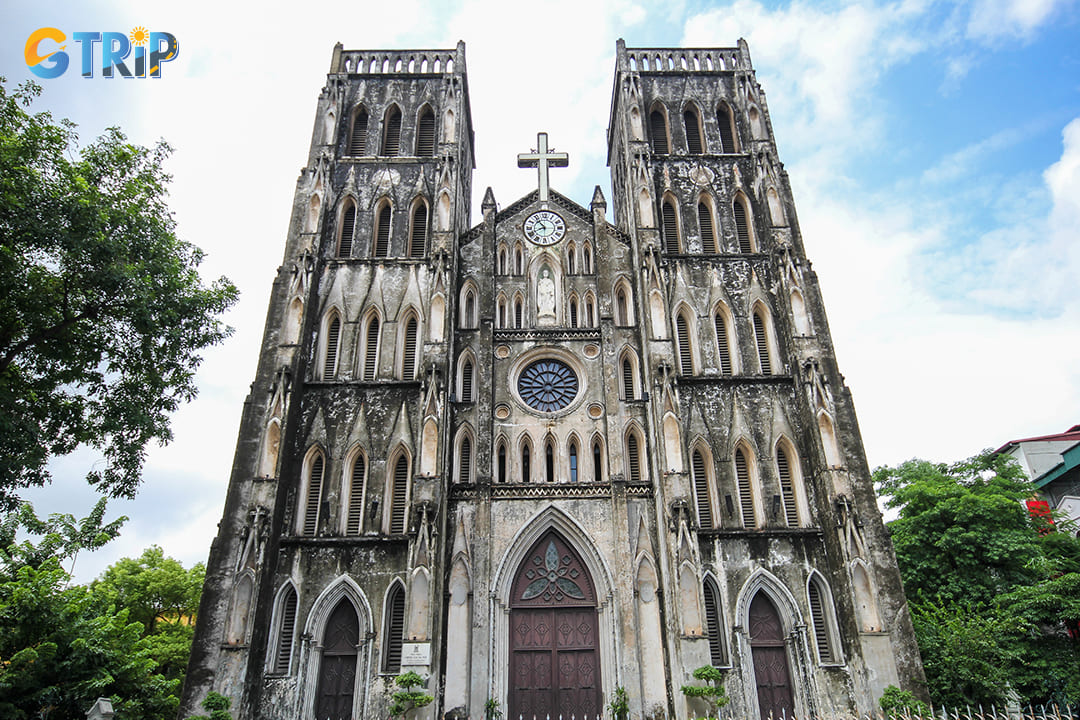
St. Joseph’s Cathedral is a prime example of Gothic Revival, also known as Neo-Gothic
Interior design: Stained glass, vaulted ceilings, altars and pipe organ
Inside St. Joseph’s Cathedral, a striking contrast emerges from its rugged exterior. The serene, ornate interior is defined by imported stained glass windows that depict vivid biblical scenes, filtering natural light to create an atmosphere of tranquility and reverence. The cathedral’s rib vaulted ceilings, with their intersecting arches, amplify a sense of spaciousness, inviting tourists to look upward and feel connected to the divine.
Central to the interior is the main altar, crafted from intricately gilded wood and adorned with religious iconography that underscores its role as a focal point for worship. Enhancing this spiritual ambiance is the magnificent pipe organ, installed in 2022 with 1,850 pipes as a symbol of cultural exchange, that enriches the acoustics during mass. Alongside the organ, several historical artifacts, including statues of saints and crosses dating back to the early 20th century, further weave together the European Catholic tradition with the distinctive local craftsmanship of Hanoi.
In essence, the architectural features of St. Joseph's Cathedral in Hanoi are a harmonious blend of Western Gothic aesthetics and Vietnamese cultural adaptation. This convergence of styles and symbolism makes the cathedral a distinctive landmark, embodying the complex historical narrative of Hanoi’s colonial past.
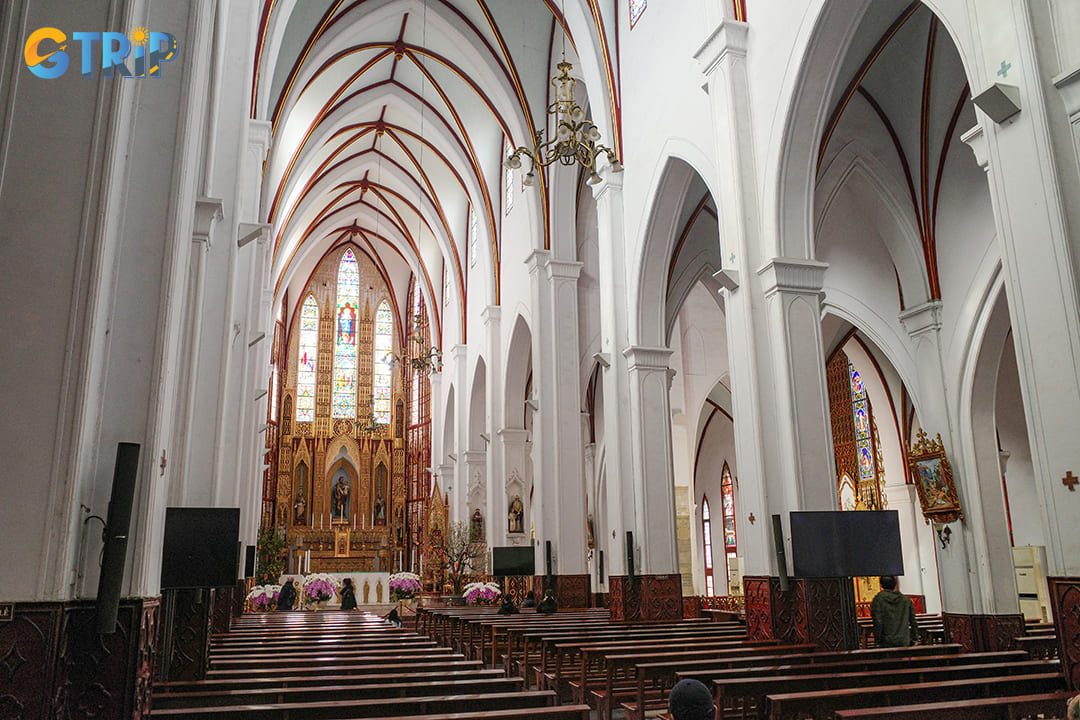
Inside St. Joseph’s Cathedral, a striking contrast emerges from its rugged exterior
Read more: Iconic French Colonial Architecture in Hanoi
4 things to do at St. Joseph’s Cathedral
St. Joseph’s Cathedral is an active center for spiritual activities, and cultural experiences, and a social hub for locals and tourists alike. If you plan to visit, here are the top activities that offer a deeper connection to the cathedral and its surroundings.
1. Check-in in front of St. Joseph’s Cathedral
The facade of St. Joseph’s Cathedral, with its twin bell towers and Gothic Revival style, has become a popular spot for photography enthusiasts. The backdrop of this imposing structure creates a captivating visual.
Photography tips:
- Golden hour: Early morning and late afternoon provide the best natural light.
- Perspective: Experiment with angles to capture the cathedral’s height and symmetrical design.
- Contextual shots: Include street vendors, locals, and cyclists to reflect the lively atmosphere.
Many tourists also take the opportunity to pose near the iron fence adorned with vines, providing a charming contrast between nature and the historic stonework.
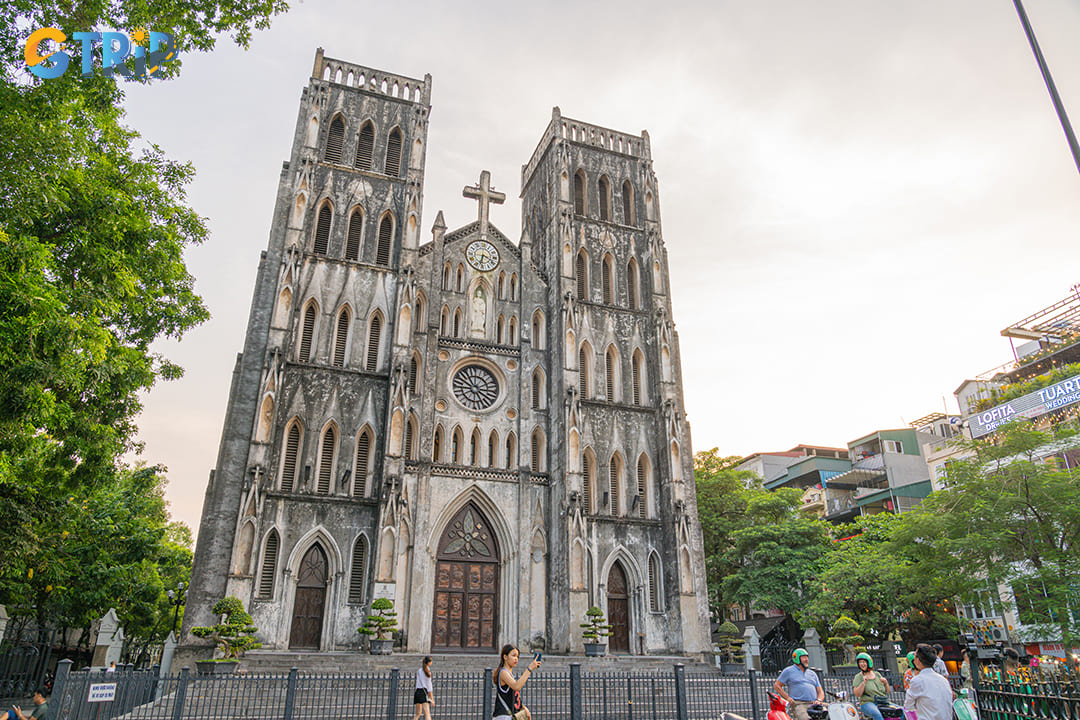
Many tourists also take the opportunity to pose near the iron fence adorned with vines
2. Attend a mass ceremony
Experiencing a Catholic Mass at St. Joseph’s Cathedral is a unique opportunity to witness the intersection of local culture and Western religious traditions. As the seat of the Roman Catholic Archdiocese of Hanoi, the cathedral serves as a significant spiritual center for the local Catholic community.
Mass schedule:
- Weekdays: 5:30 AM, 6:15 PM
- Saturday: 6:00 PM
- Sunday: 5:00 AM, 7:00 AM, 8:30 AM, 10:00 AM, 4:00 PM, 6:00 PM, 8:00 PM
Special ceremony: Every year on March 19th, St. Joseph's Cathedral holds a special ceremony to honor Saint Joseph, the patron saint of the church.
Visitor guidelines:
- Dress code: Respectful attire (covered shoulders and knees) is expected.
- Behavior: Maintain silence during the ceremony and avoid photography inside.
- Language: Mass is mostly in Vietnamese, but there is an English service on Sunday evenings.
Attending a mass not only offers a spiritual experience but also insight into the devout practices of Hanoi's Catholic community.
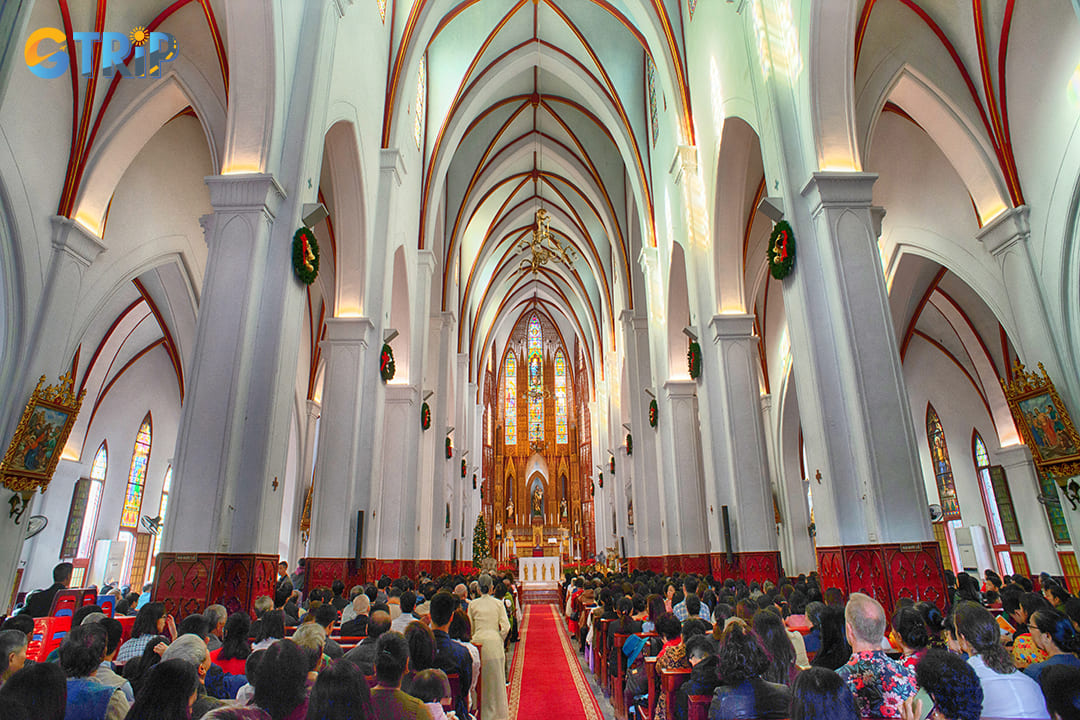
Experiencing a Catholic Mass at St. Joseph’s Cathedral is a unique opportunity to witness the intersection of local culture and Western religious traditions
3. Participate in Christmas at St. Joseph’s Cathedral
Christmas at St. Joseph’s Cathedral is one of the most anticipated events in Hanoi, drawing both local and international tourists. The entire area transforms into a festive space adorned with Christmas lights, nativity scenes, and seasonal decorations.
- Christmas Eve mass: The most significant event, often held outdoors to accommodate large crowds.
- Festive market: Street vendors line the nearby streets, selling Christmas-themed items, traditional Vietnamese snacks, and decorations.
- Choir performances: The cathedral choir performs classic hymns and carols, creating a heartwarming atmosphere.
If you plan to visit during this period, arrive early to secure a spot, as the area becomes crowded with both worshippers and tourists.
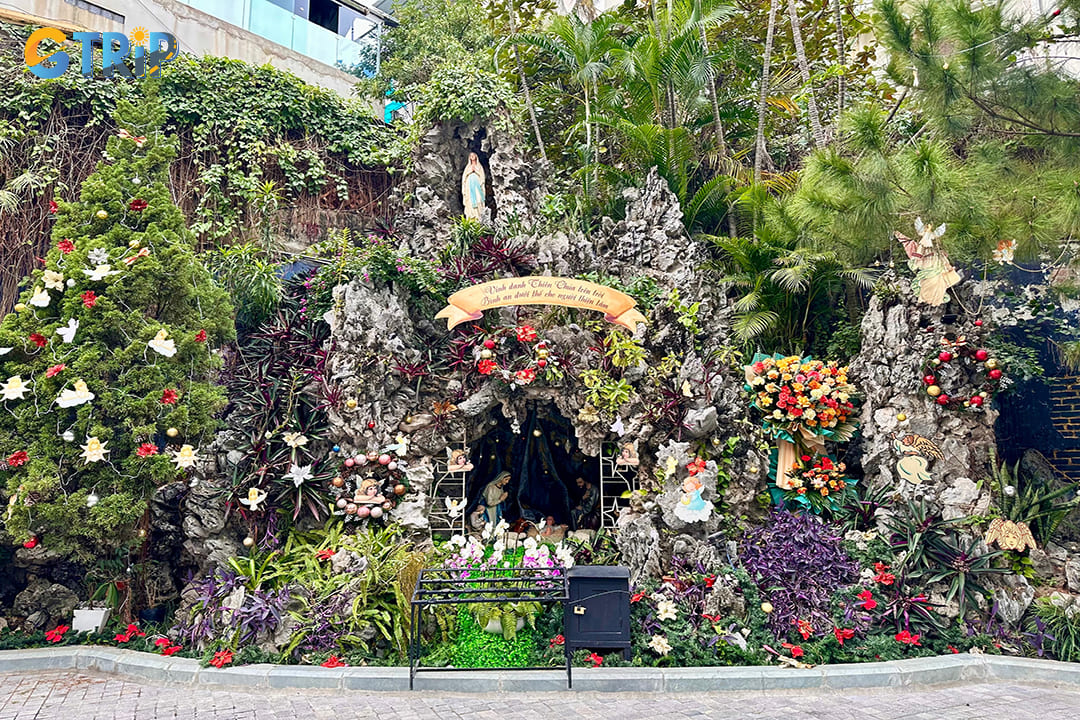
Christmas at St. Joseph’s Cathedral is one of the most anticipated events in Hanoi
4. Enjoy the surrounding cafes and street food
The streets surrounding St. Joseph’s Cathedral are known for their quaint cafés and street food vendors, making it an ideal spot to relax and observe local life. The area has a charming blend of French colonial architecture and modern Vietnamese street culture.
- Cafe culture: Many local cafes offer a blend of French and Vietnamese influences.
- Lemon tea: A refreshing local specialty enjoyed on plastic stools outside the cathedral.
- Egg coffee: Creamy, rich, and best paired with the atmospheric view of the cathedral.
- Vietnamese drip coffee: Served black or with condensed milk, showcasing Vietnam's coffee culture.
- Street food highlights:
- Banh goi (Vietnamese crispy dumplings): Fried dumplings stuffed with minced pork and mushrooms.
- Banh trang nuong (grilled rice paper): Vietnamese pizza grilled with quail eggs, pork floss, and sauces.
- Nem chua ran (fried fermented pork roll): Deep-fried fermented pork rolls served with chili sauce.

Lemon tea is a refreshing local specialty that you can try outside the cathedral
Visiting St. Joseph’s Cathedral is not limited to sightseeing, it is a multifaceted experience that combines spirituality, history, local life, and culture. Each activity around the cathedral provides a deeper understanding of its significance to both Hanoi's Catholic community and the city's broader cultural tapestry.
Read more: Top 7 Authentic Egg Coffees in Hanoi: Beloved Local Spots You Can’t Miss
Best times to visit St. Joseph's Cathedral during the day
St. Joseph's Cathedral, a striking example of neo-Gothic architecture, is a cultural and visual landmark in Hanoi's Old Quarter. Tourists seeking the best experience will benefit from understanding the optimal times to visit.
Early morning serenity (6:00 AM - 8:00 AM)
One of the most peaceful and visually appealing times to visit St. Joseph’s Cathedral is early in the morning, especially around sunrise. During this period, the cathedral's facade glows gently in the soft morning light, creating a calm and serene atmosphere ideal for introspective tourists or those looking for unobstructed photography.
Advantages:
- The area is quieter, with fewer tourists and minimal local traffic.
- Gentle morning light enhances the architectural details of the cathedral, ideal for photography.
- Opportunity to observe or join early morning mass, usually held around 5:30 AM on weekdays.
Photography Tips:
- Capture the cathedral from a distance for a balanced view, including its twin bell towers.
- The soft, diffused light at this time reduces harsh shadows, making it ideal for capturing intricate details of the stained glass windows and Gothic elements.
Midday visit for architectural appreciation (11:00 AM - 1:00 PM)
Midday visits can be advantageous for those interested in studying the cathedral's structure closely. Despite the increase in tourists, the bright daylight reveals intricate architectural details, from the worn yet captivating gray facade to the ornate stained glass windows.
Advantages:
- The strong natural light illuminates both the exterior and interior, enhancing the vibrant stained glass windows.
- This is an ideal time for architectural enthusiasts to appreciate the Gothic elements inspired by Notre Dame de Paris.
Considerations:
- The area tends to be busier due to nearby cafés, street vendors, and local workers on lunch breaks.
- Photography might require adjusting exposure to balance strong contrasts between light and shadow.
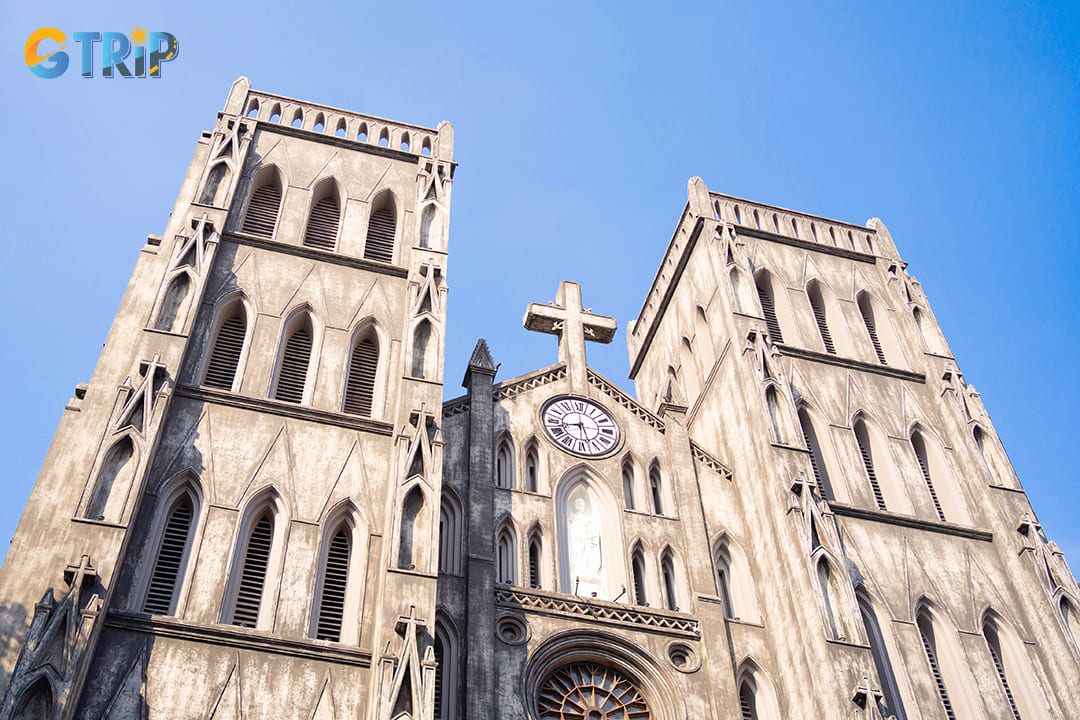
Midday visits can be advantageous for those interested in studying the cathedral's structure closely
Late afternoon for a golden hour (4:00 PM - 6:00 PM)
For photographers seeking the best light, the golden hour before sunset offers a unique opportunity. The setting sun casts a warm, golden hue over the cathedral, adding depth to photographs and a touch of ethereal beauty to the already stunning structure.
Advantages:
- The warm, golden light accentuates the cathedral’s Gothic features and creates striking visual effects.
- The area becomes more dynamic with locals and tourists preparing for evening activities, offering opportunities for candid street photography.
- As evening mass typically occurs around 6:00 PM, it’s a chance to witness the local Catholic community’s devotion.
Photography tips:
- Capture the cathedral from different angles to utilize the dramatic shadows and golden light.
- Try framing the cathedral with the surrounding trees or the nearby street life for a more dynamic composition.
Quiet hours for reflection and prayer (Non-mass hours)
Outside of mass times, typically mid-morning (8:00 AM - 10:00 AM) or mid-afternoon (2:00 PM - 4:00 PM), the cathedral is quieter. This is an ideal time for personal reflection or spiritual exploration.
Advantages:
- The interior is less crowded, allowing a more personal experience of the space.
- This period is suitable for those looking to learn about the cathedral’s religious significance or spend time in silent prayer.
Visitor etiquette: If visiting during these hours, respect the sanctity of the space. Avoid loud conversations and turn off phone notifications.
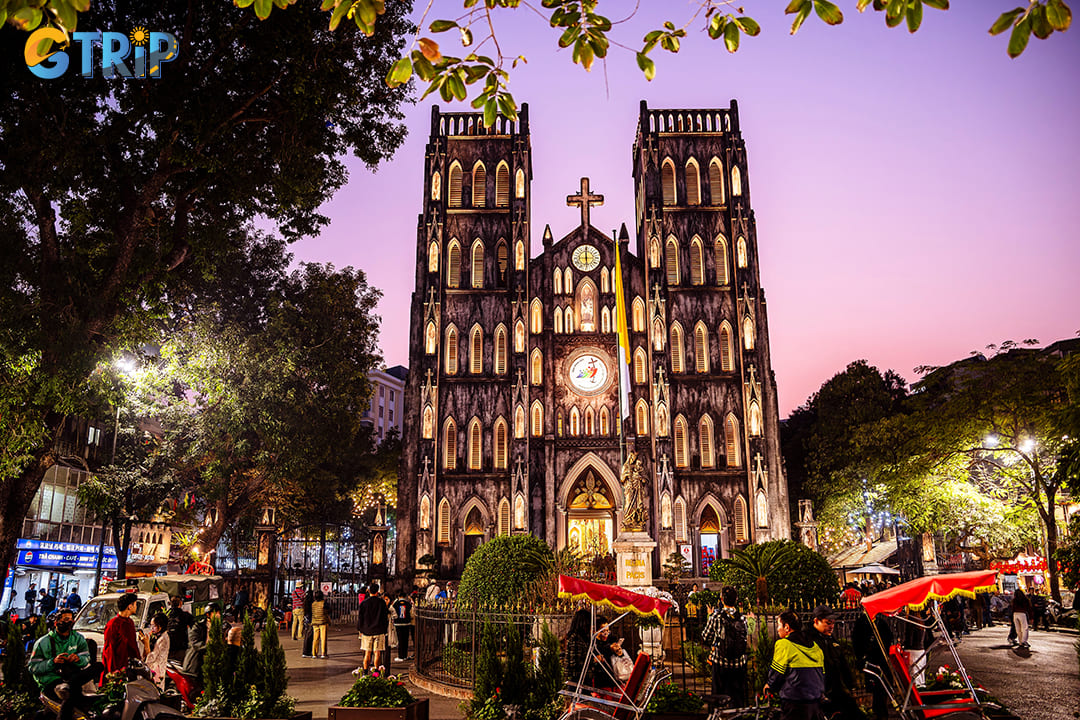
For photographers seeking the best light, the golden hour before sunset offers a unique opportunity
How to get to St. Joseph’s Cathedral?
St. Joseph’s Cathedral is nestled in the heart of Hanoi's Old Quarter, making it a popular and accessible destination for both locals and travelers. Given its central location near Hoan Kiem Lake and various cultural landmarks, there are multiple convenient ways to reach the cathedral. Below, we explore the most practical and enjoyable transportation options, catering to various preferences and budgets.
1. Walking to St. Joseph’s Cathedral
Walking is arguably the most popular way to reach St. Joseph’s Cathedral, especially if you’re staying within the Old Quarter. The experience allows you to explore the charming, narrow streets of Hanoi, lined with traditional shops, street vendors, and colonial-era architecture.
- From Hoan Kiem Lake: Only about 5 - 7 minutes by foot. Start from the north end of Hoan Kiem Lake, head towards Ly Quoc Su Street, and follow the signs leading to Nha Chung Street, where the cathedral is located.
- Nearby landmarks: If you’re visiting the Ngoc Son Temple or the Thang Long Water Puppet Theater, the cathedral is within a 10-minute walk.
- Tips: Hanoi’s Old Quarter can be crowded, especially during weekends and holidays. Be mindful of motorbikes and keep valuables secure.
2. Using public transport
Hanoi’s public transportation system is efficient and affordable, although slightly challenging for first-time tourists. Below are recommended public transport options:
Bus services:
- Bus routes: The nearest bus stop to St. Joseph’s Cathedral is on Hang Gai Street or Trang Thi Street. Popular bus lines that pass through include 09, 14, 36, and 45.
- Cost: Approximately 7,000 VND ($0.30) per ride.
- Travel tip: The buses can be crowded during rush hours (7:30 AM - 9:00 AM and 4:30 PM - 6:30 PM). Prepare a small change in Vietnamese dong for the ticket.
Public e-bikes and e-scooters:
- App-based options: Grab, Be, and XanhSM provide affordable e-bike and e-scooter services.
- Cost: 15,000 - 30,000 VND ($0.60 - 1.20) depending on the distance.
- Advantages: Flexible, eco-friendly, and can navigate the narrow lanes of the Old Quarter with ease.
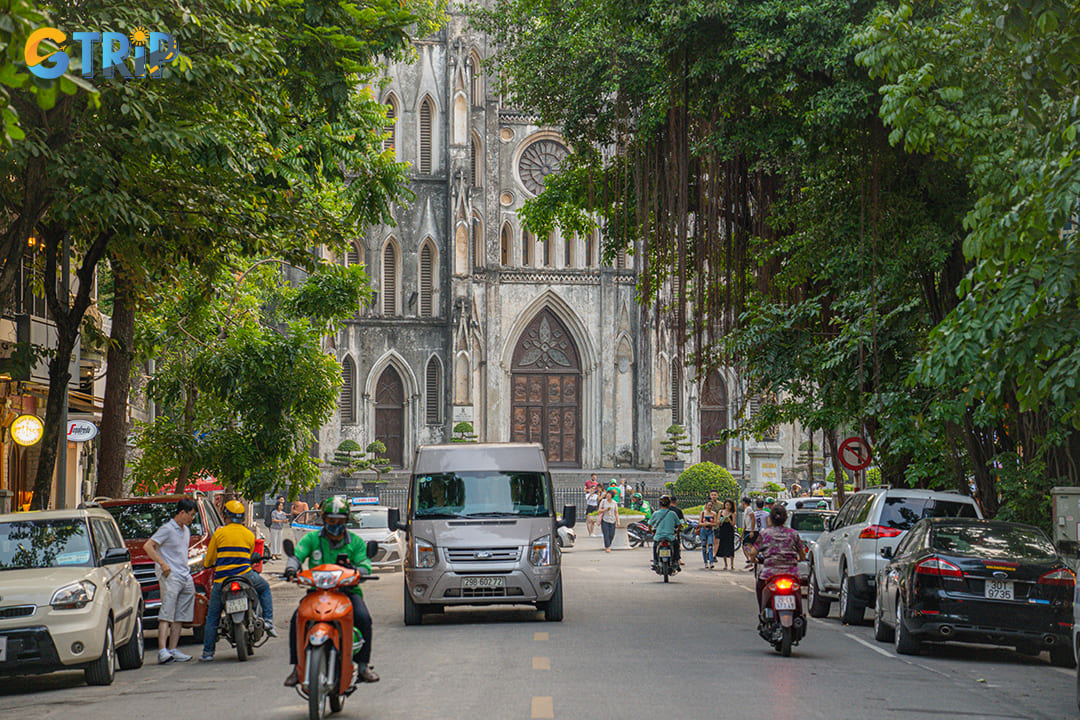
Hanoi’s public transportation system is efficient and affordable
3. Cyclo rides
Riding a cyclo (traditional three-wheeled bicycle taxi) offers a nostalgic and immersive experience, perfect for those interested in slow-paced exploration.
- Availability: Cyclos are readily available near Hoan Kiem Lake and major tourist areas like Hang Dao Street.
- Cost: Generally 100,000 - 150,000 VND ($4 - $6) for a 20-30 minute ride, but it's essential to agree on the price beforehand.
- Experience: Cyclo rides provide a leisurely way to experience the Old Quarter while navigating its labyrinthine streets. However, it's recommended to avoid cyclos during peak traffic hours to prevent congestion and extended travel times.
4. Ride-hailing services: Grab and Be
For those seeking convenience, ride-hailing apps like Grab and Be are popular and reliable in Hanoi.
- Car services: Suitable for groups or if you’re carrying luggage. The estimated fare is 30,000 - 50,000 VND ($1.20 - $2.00) from nearby areas like the Old Quarter or Hoan Kiem Lake.
- Motorbike: Faster during peak traffic. The fare ranges from 20,000 - 40,000 VND ($0.80 - 1.60).
- Advantages: Cashless payment options through the app, estimated arrival times, and English language support for foreigners.
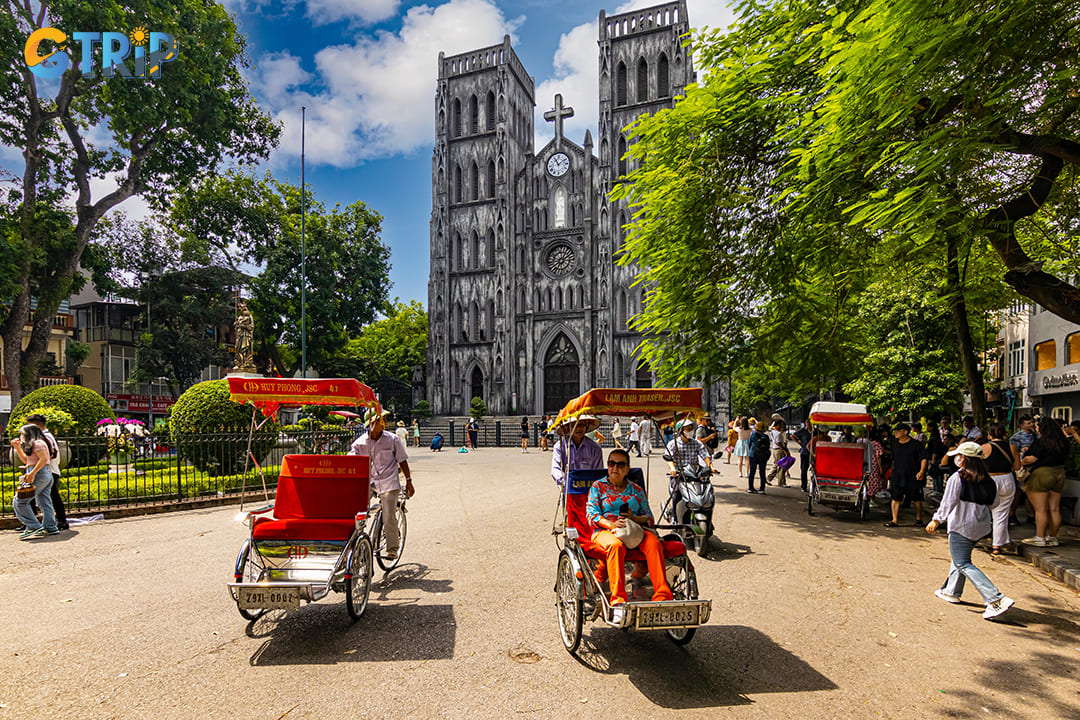
Riding a cyclo offers a nostalgic and immersive experience, perfect for those interested in slow-paced exploration
5. Taxis and private cars
If you prefer a more private mode of transportation, taxis and private car hires are also available.
- Taxi services: Reputable companies include Mai Linh, Vinasun, and G7 Taxi. The starting fare is usually around 15,000 VND ($0.60) for the first kilometer.
- Private car hire: Ideal for larger groups or if traveling from outside Hanoi. Rates can vary between 200,000 - 400,000 VND ($8 - $16) depending on distance and duration.
- Travel tip: Ensure the meter is on or confirm the fare before starting the ride to avoid overcharging.
Read more: Trusted vehicle rental locations in Hanoi
Important notes when visiting St. Joseph’s Cathedral
Visiting St. Joseph’s Cathedral in Hanoi can be a memorable experience, but it’s essential to understand specific guidelines and cultural expectations. This section covers crucial information on entrance rules, dress code, and visitor etiquette to help you navigate your visit seamlessly.
1. Dress code
St. Joseph’s Cathedral is a functioning religious institution that upholds Catholic traditions. Proper attire is crucial to show respect for the sanctity of the site.
Recommended attire:
- Modest clothing: Wear clothes that cover your shoulders, chest, and knees.
- Avoid revealing outfits: Shorts, mini skirts, sleeveless tops, and low-cut shirts are discouraged.
- Footwear: Comfortable walking shoes are advisable, but avoid flip-flops or overly casual footwear.
- Head coverings: While not strictly required, wearing a hat or scarf can be a gesture of respect, especially during mass. However, men should remove their hats when inside the cathedral.
2. Visitor etiquette
Maintaining decorum and respecting the spiritual significance of the cathedral is essential for all tourists.
Do's:
- Remain silent: The cathedral is a place of worship, and silence is appreciated, especially during prayers or mass.
- Photography: While photography is generally allowed, avoid flash, tripods, and loud camera noises. During mass, it’s best to refrain from taking photos to avoid disruptions.
- Respect rituals: If a mass or a service is ongoing, observe respectfully from the back and avoid interrupting the proceedings.
- Dispose of trash properly: Maintain cleanliness by using designated trash bins.
Don'ts:
- Avoid loud conversations: Speaking loudly or using mobile phones disrupts the serenity of the space.
- No food or drink: Consuming food or beverages inside the cathedral is prohibited.
- Refrain from commercial activities: Using the cathedral’s premises for unauthorized commercial purposes, such as filming or conducting business, is not allowed.
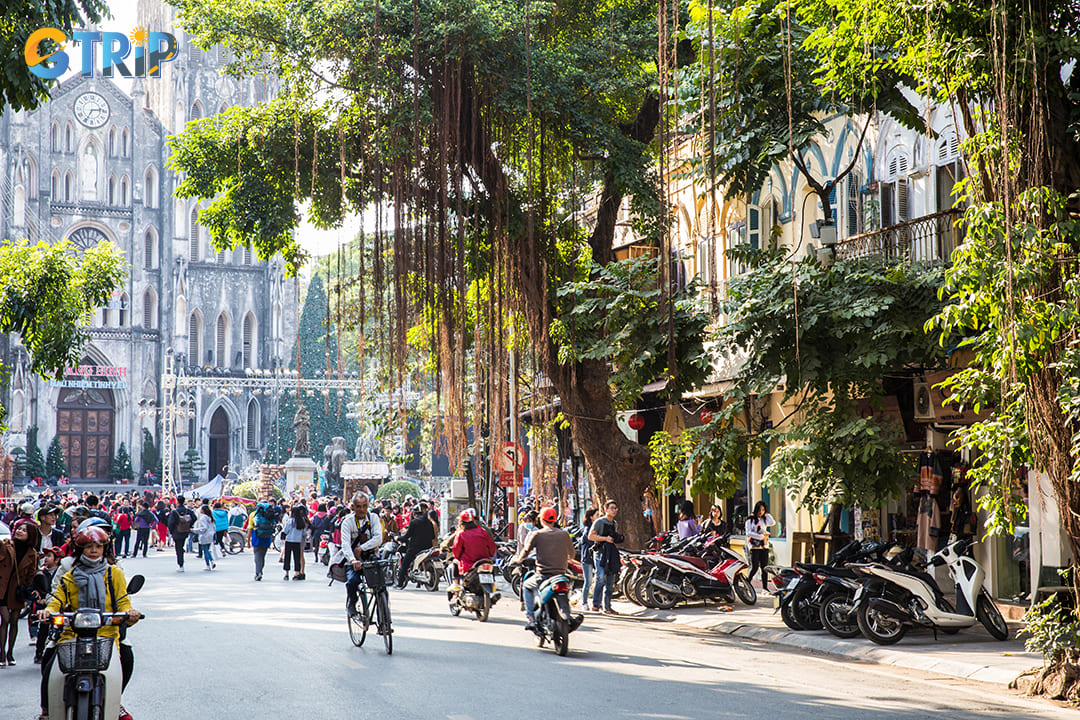
Maintaining decorum and respecting the spiritual significance of the cathedral is essential for all visitors
3. Cultural sensitivity
Vietnam has a unique blend of Buddhism, Catholicism, and folk beliefs. Being aware of cultural sensitivities will help you avoid unintended disrespect.
- Symbolic gestures: Avoid making exaggerated or inappropriate gestures near the altars, statues, or sacred objects.
- Photography with clergy: Always seek permission before taking photographs with priests or church staff.
- Interaction with worshippers: While the community is generally welcoming, avoid interrupting worshippers during prayer or religious activities.
Nearby attractions from St. Joseph’s Cathedral
St. Joseph’s Cathedral stands in the heart of Hanoi’s Old Quarter, a bustling area rich in history, culture, and architectural marvels. Given its central location, the cathedral is surrounded by numerous significant landmarks, each offering a glimpse into Hanoi's diverse cultural and historical landscape. Exploring these nearby attractions can create a well-rounded experience for tourists seeking to understand both the spiritual and secular essence of the city. Below, we explore four notable attractions within walking distance from the cathedral.
1. Hoan Kiem Lake (1 km)
Hoan Kiem Lake, often referred to as the "Lake of the Returned Sword", is deeply rooted in Vietnamese folklore. According to legend, King Le Loi returned a magical sword to a golden turtle in the lake after defeating the Ming invaders in the 15th century. The lake has since become a symbol of peace and unity for the Vietnamese people.
Key features:
- Ngoc Son Temple: Situated on Jade Island, connected to the lakeshore by the iconic red The Huc Bridge. The temple honors General Tran Hung Dao, a revered military leader.
- Turtle Tower: A small, French-inspired structure at the lake’s center, symbolizing the legend of the golden turtle.
- Cultural activities: On weekends, the roads around the lake are closed to traffic, becoming a pedestrian zone. This space hosts street performances, cultural events, and recreational activities.
Why visit:
- Photogenic views, particularly at sunrise and sunset.
- Experience the blend of Vietnamese folklore and French colonial architecture.
- Observe local life: early morning exercises, couples taking wedding photos, and street vendors.
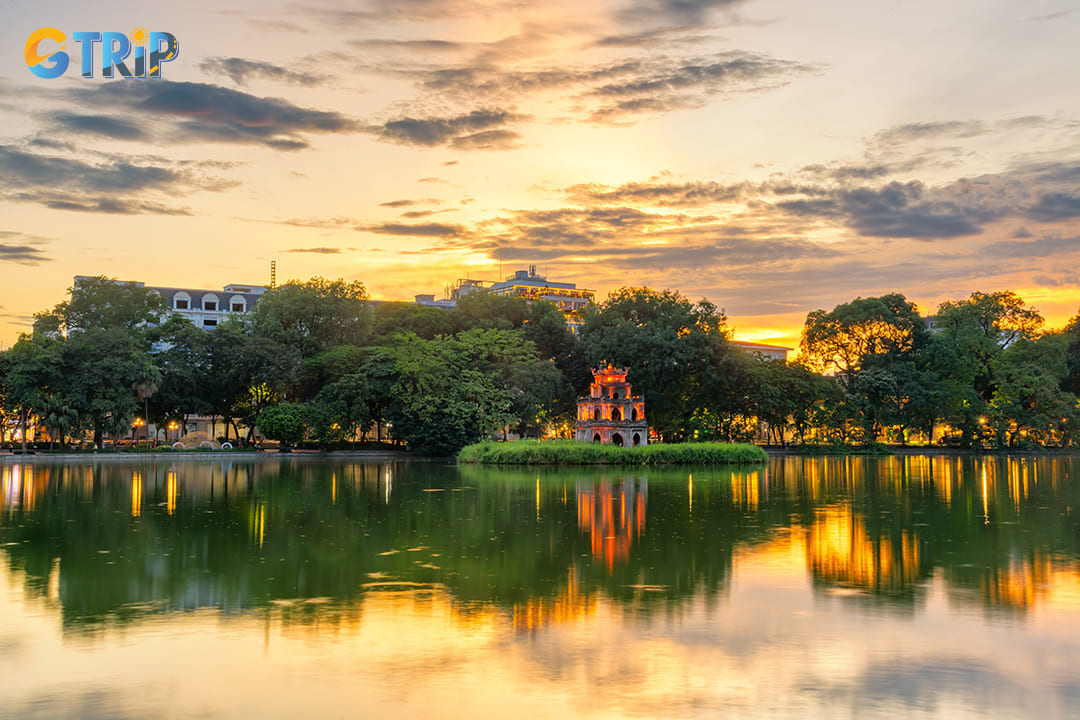
Hoan Kiem Lake, often referred to as the "Lake of the Returned Sword", is deeply rooted in Vietnamese folklore
2. Hoa Lo Prison (650 m)
Originally constructed by French colonialists in the late 19th century, Hoa Lo Prison was used to incarcerate Vietnamese revolutionaries. During the Vietnam War, it housed American prisoners of war (POWs), who ironically nicknamed it the "Hanoi Hilton". The prison now serves as a museum, depicting the harsh realities of wartime imprisonment and the resilience of Vietnamese patriots.
Notable exhibits:
- Prison cells: Showcasing the cramped and severe conditions experienced by Vietnamese revolutionaries.
- Execution room: Featuring the original French guillotine used for executions.
- Vietnam War artifacts: Displays on American POWs, including personal belongings and recorded testimonies.
Why visit:
- Gain insight into Vietnam’s colonial past and the indomitable spirit of its people.
- Understand the perspective of both Vietnamese prisoners and American POWs.
- A thought-provoking, educational experience that contrasts the tranquility of nearby religious sites.
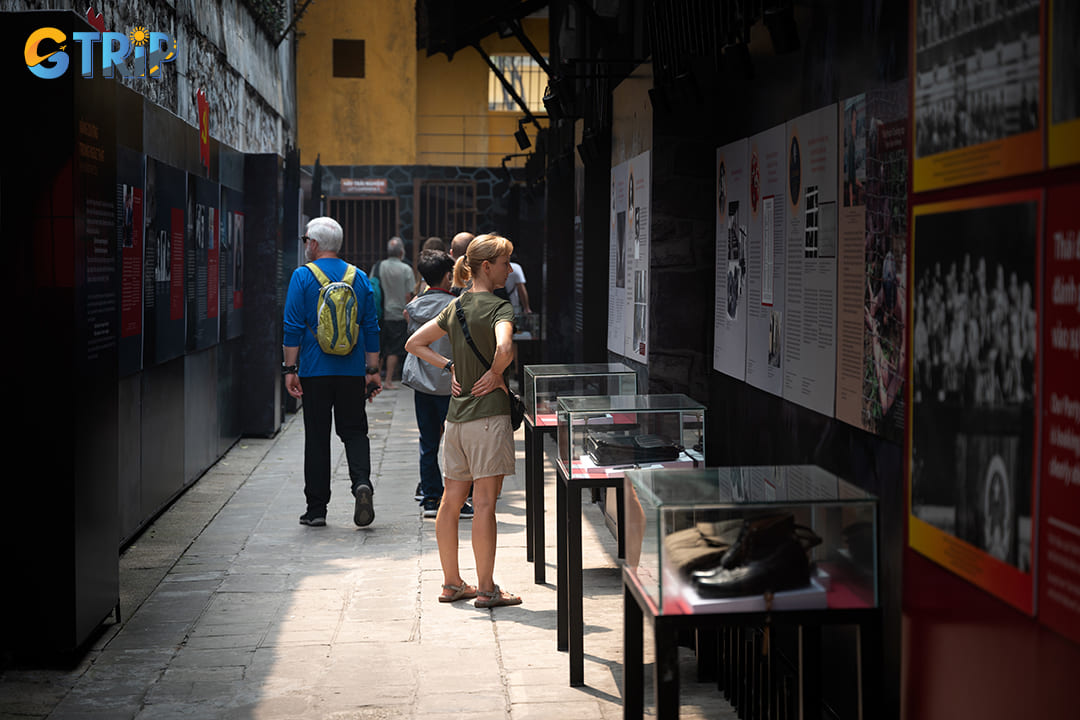
Originally constructed by French colonialists in the late 19th century, Hoa Lo Prison was used to incarcerate Vietnamese revolutionaries
3. Temple of Literature (2.5 km)
The Temple of Literature, established in 1070, is dedicated to Confucius and serves as Vietnam’s first national university. It has historically been a hub of scholarly pursuit, fostering a deep respect for education, literature, and traditional Confucian values.
Architectural highlights:
- Five courtyards: Each symbolizing a different aspect of Confucian teachings.
- Stelae of doctors: Stone tablets mounted on the backs of turtles, inscribed with the names of scholars who excelled in the imperial examinations.
- Well of heavenly clarity: A reflective pool considered symbolic of intellectual purity.
Why visit:
- Experience ancient Vietnamese architecture amid lush gardens.
- Learn about the traditional Vietnamese education system and its influence on contemporary Vietnamese culture.
- Participate in calligraphy workshops and appreciate traditional Vietnamese art.
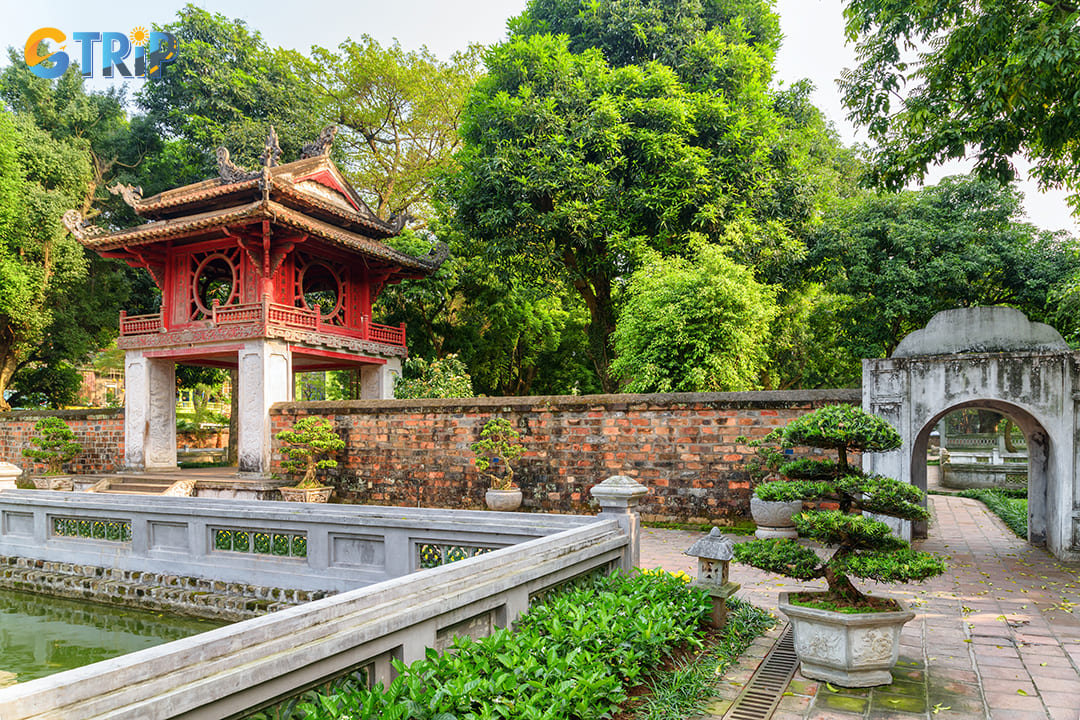
The Temple of Literature, established in 1070, is dedicated to Confucius and serves as Vietnam’s first national university
4. Vietnamese Women’s Museum (800 m)
Opened in 1987, the Vietnamese Women’s Museum is dedicated to the contributions of women throughout Vietnam's history, including their roles in family, work, and wartime efforts. It is considered one of the top museums in Hanoi for its well-curated, engaging exhibits.
Exhibition highlights:
- Women in the family: Traditional wedding dresses and artifacts showcasing various ethnic groups in Vietnam.
- Women in war: Photographs, uniforms, and personal accounts illustrating the critical roles women played during conflicts.
- Women’s fashion: A collection of traditional attire, including Ao Dai and ethnic minority clothing.
Why visit:
- Gain a deeper understanding of gender roles in Vietnamese society, both historically and today.
- Explore Vietnam’s 54 ethnic groups through the lens of women’s cultural practices.
- Appreciate the resilience and strength of Vietnamese women across various historical periods.
Read more: Complete Guide to the Vietnam Museum of Ethnology
FAQs about St. Joseph's Cathedral
1. Can visitors enter the cathedral's bell towers?
Generally, the bell towers are not open to the public due to safety reasons. Access is limited to authorized personnel for maintenance purposes. Occasionally, during special religious events or tours organized by the Roman Catholic Archdiocese of Hanoi, access may be granted, but these are rare and require prior arrangements.
2. Can I take photographs inside the cathedral?
Photography inside the cathedral is generally allowed when mass is not in session. However, you should avoid using flash, tripods, or making loud noises, as this may disturb the sanctity of the space. For professional photography, it's best to seek permission from the cathedral's administration.
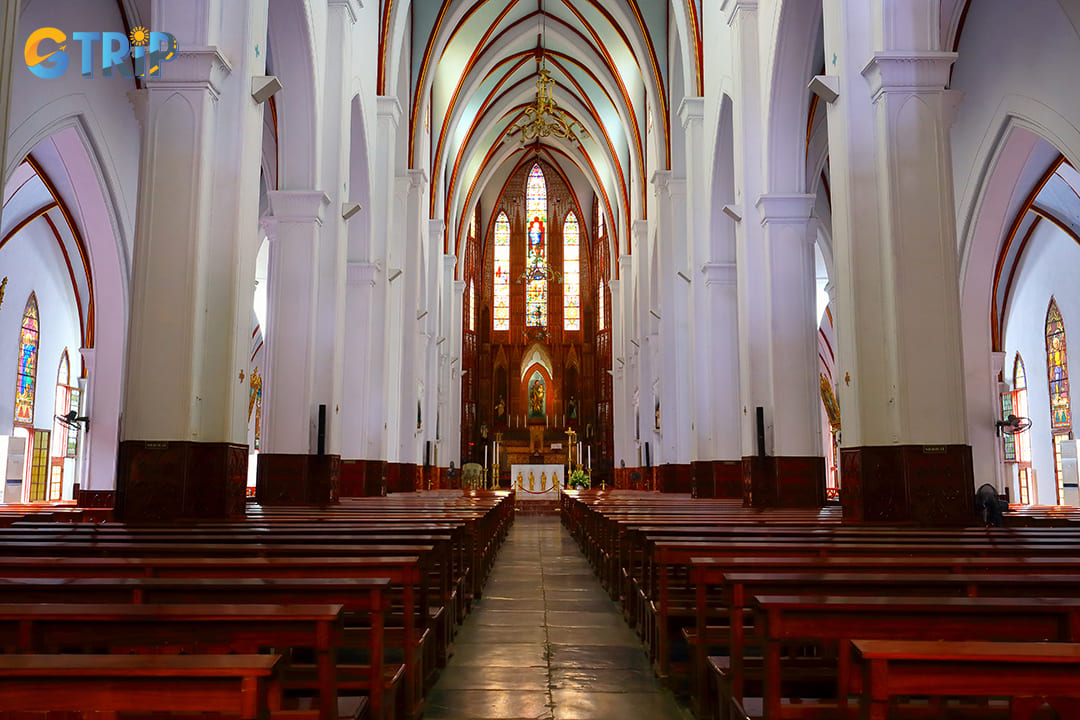
Photography inside the cathedral is generally allowed when mass is not in session
3. Can I light a candle inside St. Joseph’s Cathedral?
Yes, you are typically allowed to light candles inside the cathedral as an act of prayer or reflection. There are designated areas for candle lighting. However, it's recommended to check with the staff or observe local practices before doing so.
4. Are there any souvenir shops near the cathedral?
Yes, there are several noteworthy souvenir shops in the immediate vicinity of St. Joseph’s Cathedral in Hanoi’s Old Quarter. For instance:
- Collective memory - The House of Curios: Located at 12 Nha Chung Street, this shop is well-known for its curated selection of handmade and ethically produced gifts that capture the spirit of Hanoi. From unique homewares to custom paper goods, it offers a wide variety of items that reflect local craftsmanship.
- The Craft House Cathedral in Hanoi: Located at 19 Nha Chung Street, this shop offers a range of artisanal souvenirs such as intricately designed keychains, miniature architectural models, and decorative magnets.
- Huu La La: A branch near the cathedral stocks traditional items including silk products and small accessories, along with a modest selection of ao dai and lacquered trinkets. These stores not only provide authentic Vietnamese souvenirs but also serve as gateways to understanding Hanoi’s rich cultural tapestry. Visiting these shops offers both a unique shopping experience and an opportunity to engage with local artisans.
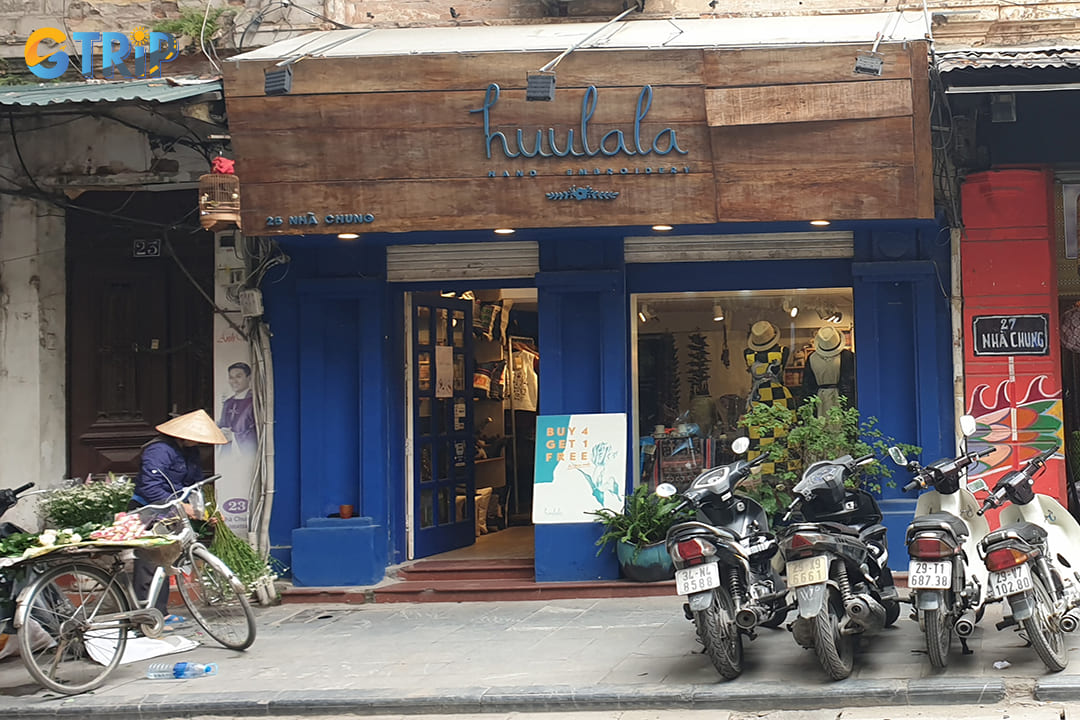
A branch near the cathedral stocks traditional items including silk products and small accessories
Read more:
St. Joseph's Cathedral stands as a symbol of Hanoi’s rich history and architectural beauty, drawing locals and travelers alike to explore its cultural and spiritual significance. This article has offered insights into the cathedral’s history, its role in local life, and tips for visiting. For more on Hanoi’s cultural heritage, be sure to check out related guides. If you're planning a trip to Hanoi, explore more with Ha Noi Tours from GTrip - Vietnam Travel Agency.

